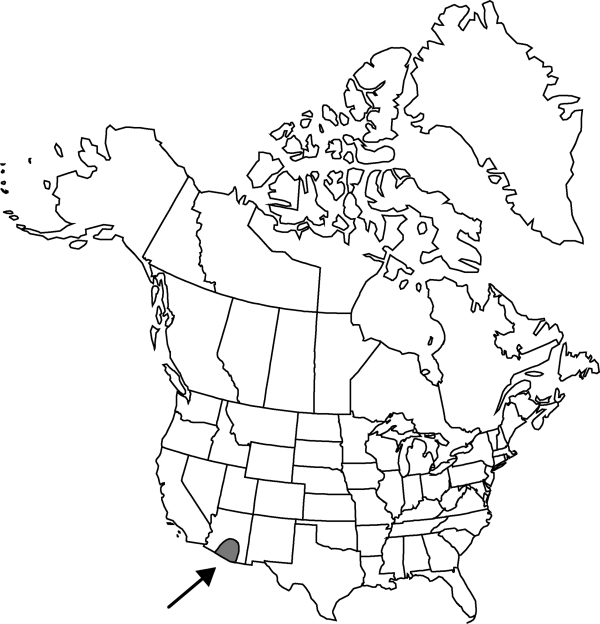Cylindropuntia versicolor
in C. Backeberg and F. M. Knuth, Kaktus-ABC, 125. 1935.
Trees or shrubs, openly branching at acute angles, to 2 m. Stem segments whorled or subwhorled, purple to green-purple, 4–18 × 1–2 cm; tubercles prominent, elongate-oval, 1–2 (–2.5) cm; areoles subcircular, 3.5–4 mm diam.; wool tan to brown, aging gray. Spines 6–8 per areole (1–2 bristlelike spines) increasing with time, well distributed along stem, slightly interlacing with spines of adjacent areoles, short; abaxial spines usually reflexed, whitish, pinkish to redbrown, lightly flattened, the longest 10–18 mm; adaxial spines erect or spreading, rich redbrown, gray coated basally, subterete, 6–11 mm; sheaths grayish, tipped brown or yellow to golden Glochids in small adaxial tuft or crescent, dark yellow, to 1 mm. Flowers: inner tepals yellow-green, yellow to gold or bronze, or red to rose or magenta, spatulate, apiculate; filaments yellowish green; anthers yellow; style whitish to pale bronze; stigma lobes whitish. Fruits often proliferating, yellowish green or tinged red to purple, often stipitate, obovate, 25–40 × 10–20 mm, leathery-fleshy, tuberculate or smooth, essentially spineless; tubercles prominent, at first, subequal in length or proximal ones longer, fertile ones swelling and becoming smooth; umbilicus to 9 mm deep; areoles 20–30. Seeds yellowish, polygonal in outline, warped, 3.5–5.5 × 2.5–5 mm, sides nearly flattened with depressions and protrusions to angular subspheric; girdle smooth or in a groove. 2n = 22.
Habitat: Sonoran Desert, desert scrub, flats, washes, rocky hillsides, canyons
Elevation: 600-1300 m
Distribution

Ariz., Mexico (Sonora).
Discussion
Cylindropuntia versicolor forms hybrids with C. acanthocarpa var. major, C. arbuscula (= C. ×vivipara), C. leptocaulis (see discussion under 3. C. ×tetracantha), and C. spinosior (= C. ×grantiorum P. V. Heath). Cylindropuntia ×grantiorum, found in eastern to south-central Arizona, is intermediate between the parental species in values for the number of spines per stem areole, stem segment diameter and color, and fruit tubercles. The hybrids between C. versicolor and C. acanthocarpa var. major, which occur in south-central Arizona, have fleshy, tuberculate fruits, often with one or two short permanent spines at apex and longer and more numerous spines per stem areole.
Cylindropuntia versicolor itself may be of hybrid origin.
Selected References
None.